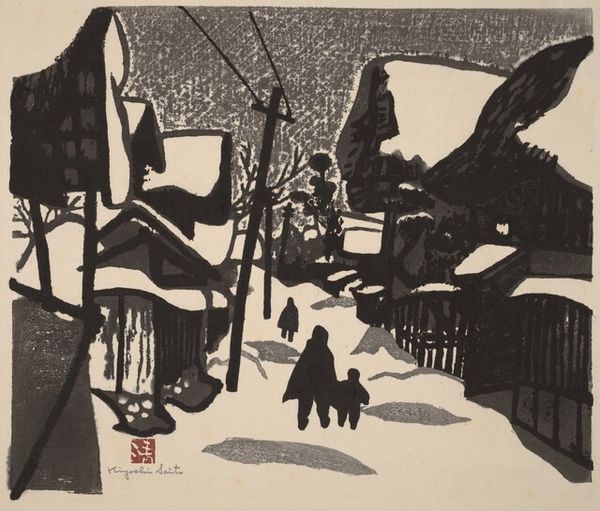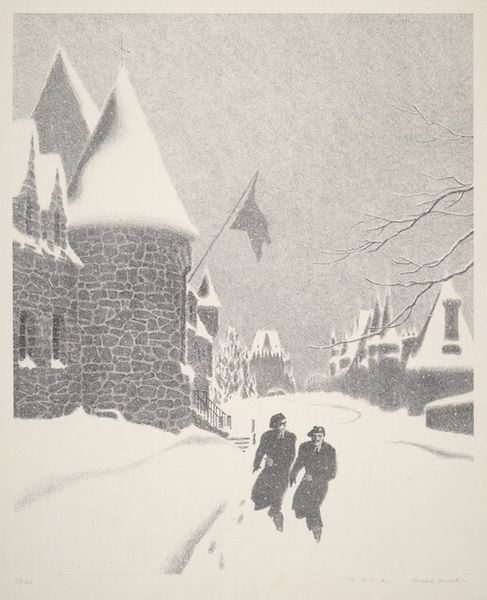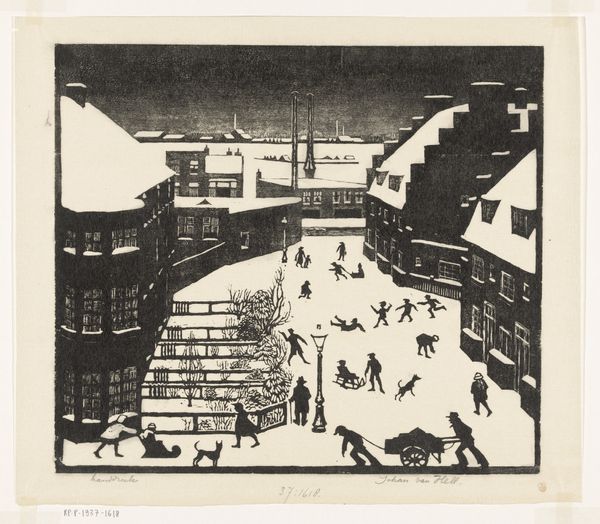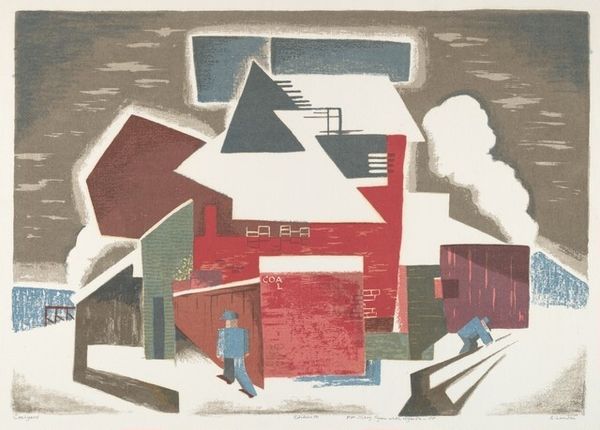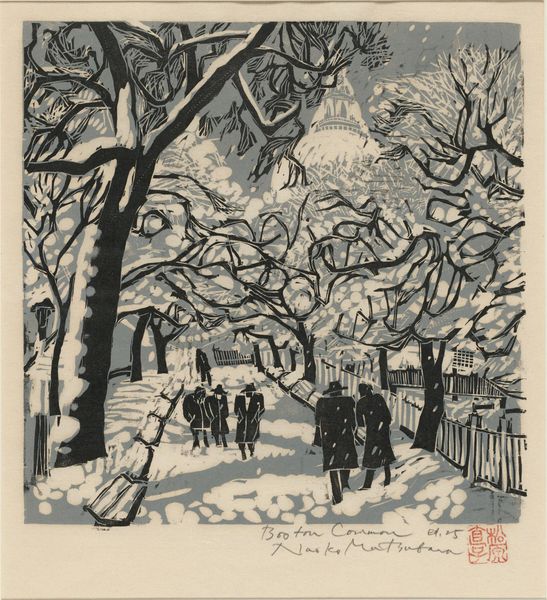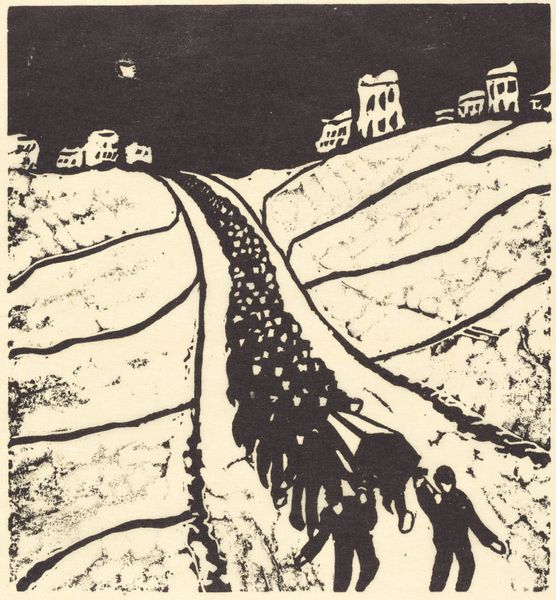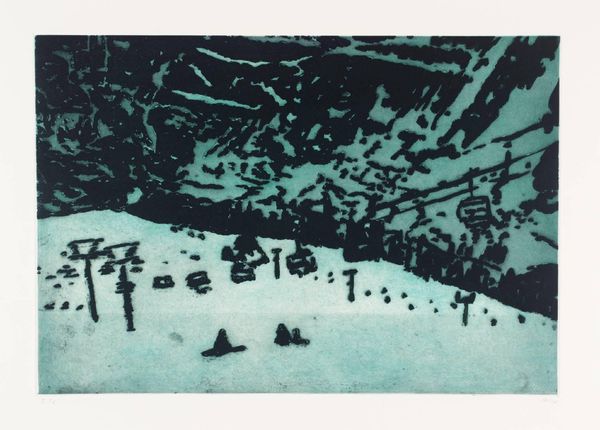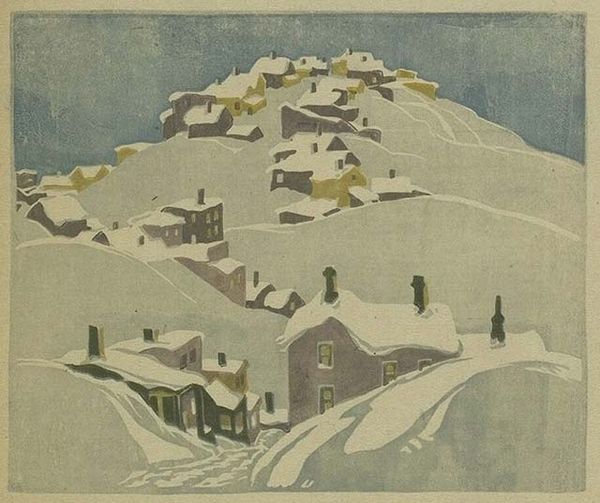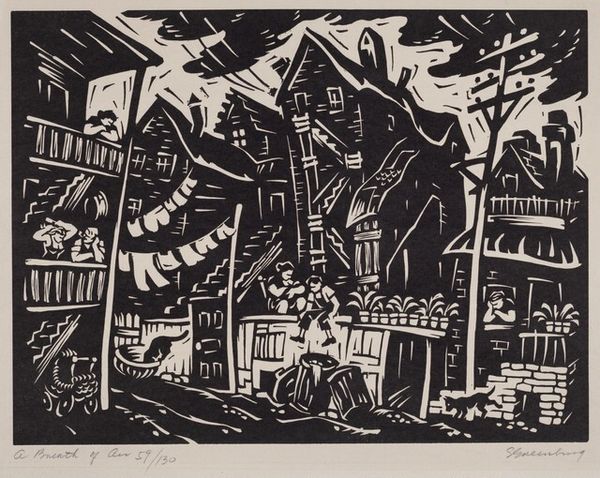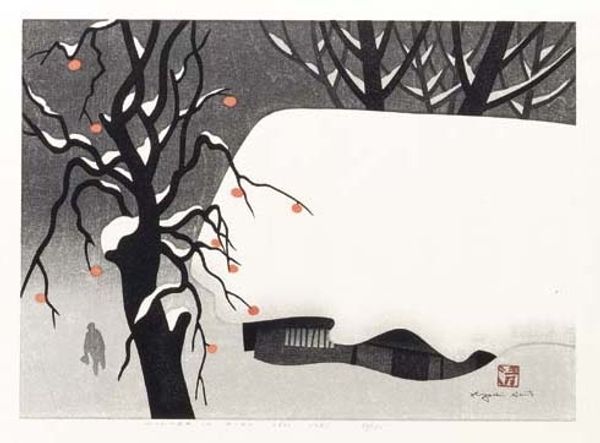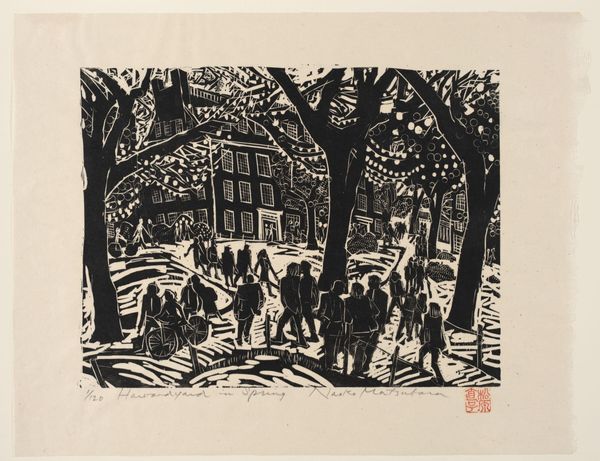
Copyright: Kiyoshi Saito,Fair Use
Editor: This woodblock print, "From Winter in Aizu" by Kiyoshi Saito, created in 1967, is really striking! I'm immediately drawn to how the heavy snow transforms the village into something almost abstract and isolates the figures walking through it. What do you see in this piece, beyond the obvious depiction of a winter scene? Curator: It's precisely that transformation that holds such potent imagery. Think about the weight of the snow, not just physically but symbolically. Snow, across many cultures, represents purity, cleansing, but also, isolation and dormancy. See how Saito uses the stark contrast of black and white to amplify this? The figures, simplified and darkened, become almost like shadows passing through a liminal space. Editor: Liminal space...that makes sense! I was wondering about their lack of detail. Are they meant to be anonymous, universal figures? Curator: In a way, yes. They’re archetypes moving through a landscape burdened with cultural memory. Woodblock printing itself carries weight. Ukiyo-e prints often depicted fleeting pleasures, the floating world. By using this traditional medium to capture a winter scene, Saito connects to that history, but also subverts it. Winter is not a fleeting pleasure, but an enduring presence, a test of resilience. How does that idea resonate with you? Editor: That resonates a lot. The black and white and bold lines contribute to that starkness you mentioned. I think I see a connection between the stark visual language and enduring themes now. I appreciate understanding how Saito is speaking with history, not just depicting a pretty winter scene. Curator: Exactly! The artist uses simplicity to access profound cultural layers. And we, in turn, access those layers through the image.
Comments
No comments
Be the first to comment and join the conversation on the ultimate creative platform.
